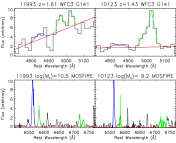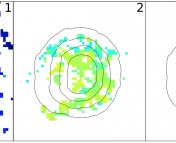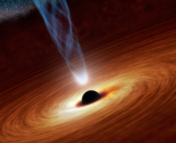The Undergraduate Research series is where we feature the research that you’re doing. If you are an undergraduate that took part in an REU or similar astro research project and would like to share this on Astrobites, please check out our submission page for more details. We would also love to hear about your more general research experience!

Matt Taylor
The University of Sheffield
Hi, my name is Matt. I have just finished my masters in astrophysics and wanted to share my research project with those who are interested in the field. This research was for my 4th-year undergraduate dissertation project, completed under the supervision of Clive Tadhunter at the University of Sheffield. While university has been great, there is almost nothing you cannot learn at an undergraduate level online! So if you are interested in physics and space, keep researching and keep asking questions!
Over the past 20 years, AGN feedback has become a rapidly evolving area of astrophysics research. It is currently believed that there is a fundamental link between the growth of a supermassive black hole and the evolution of the entire host galaxy in which it resides. The most prominent theory is that when a black hole is very active, it somehow drives away lots of the surrounding gas which would otherwise be accreted onto the black hole. This research investigates the extent to which the surrounding neutral gas is effected by AGN activity in ultraluminous infrared galaxies (ULIRGs).
All massive galaxies host supermassive black holes (SMBH) at their centres. Rapid accretion of material onto a supermassive black hole releases so much energy that it often outshines the entire stellar population of the galaxy, causing the centre of the galaxy to light up as an active galactic nucleus (AGN). This stage of black hole growth give rise to both relativistic particle jets and radiative winds that heats, shocks and redistributes the interstellar medium within the host galaxy, quenching star formation (also known as feedback). While simulations suggest that AGN feedback is intrinsically linked to the evolution of the entire galaxy, the observation evidence of radiative feedback on galaxy-wide scales is less clear in the neutral gas phase.
As such, this research use spectroscopic observations taken with the Very Large Telescope (imaginative name!) and the William Herschel Telescope to measure the gas kinematics of neutral sodium in the most luminous and rapidly evolving galaxies in the local universe, where radiative winds close to the accretion disk of the SMBH are believed to have accelerated the surrounding gas to high velocities, enabling us to test how powerful they are. Since the gas is outflowing along the line of sight (i.e directly towards the observer), you cannot directly measure the radial extent of the outflow, meaning other methods have to be used.

The graph above shows the Na I feature for the case of the galaxy F19254-7245S, otherwise known as the Superantennae. The main doublet absorption feature is visible, as well as a third ‘dip’ to the left of the main two absorption profiles. This third dip indicates outflowing gas which is likely driven by AGN-driven winds, enabling us to measure how powerful it is and make assumptions regarding its radial-extent. This type of analysis was conducted for 17 different galaxies in our sample.
Of the 17 ULIRGs studied in this report, 15 have clear Na I absorption profiles and the kinematics were calculated for 13 of these objects. There is strong evidence to suggest that galaxy wide, neutral outflows are present in F19254, and possibly in the galaxy F12072. Moreover, small (< kpc) neutral outflows close to the accretion disk are likely present in the radio loud quasar PKS1549. This is interesting as previous HI observations of the neutral phase did not reveal the presence of outflowing gas.
Despite this, when looking at the study as a whole, it seems AGN-driven neutral outflows are not galaxy-wide and lack the ability to affect the star formation histories of the entire galaxy. Instead, they likely have a significant impact on nuclear starbursts on sub-kpc scales, with the potential to expel the surrounding gas, quenching star formation in the nucleus of the galaxy.
If this field of research interests you, I would recommend the following links for an accessible academic introduction:
– The Many Routes to AGN Feedback
– Observational Evidence of AGN Feedback
Astrobite edited by: Mitchell Cavanagh




